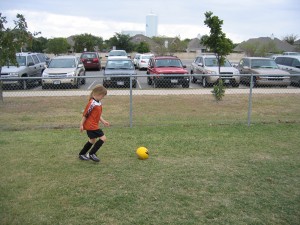 February 9, 2010
February 9, 2010
I received a ‘smileworthy’ email from my friend and colleague, Ed Maibach, on Monday. He had received word that one of the articles we co-authored had been named to the 50 most read articles in the Sage journal, the American Behavioral Scientist. In fact, the article is #5 on the list, as you can see if you visit http://abs.sagepub.com/reports/mfr1.dtl
The article’s title, “Competencies for the health communication specialist of the 21st century,” gives some idea why it has been one of the most read publications. The importance of this area both theoretically and in application has been widely recognized. This has contributed to a surge in adding health communication classes to undergraduate and graduate programs around the world. And in adding these programss, the debate continues about the focus of education and training.
As I looked back at the lessons learned to develop the article, I realize that many of these competencies are ones that we all need in order to successfully navigate the health information that might only be described as overwhelming in quantity and sometimes questionable in quality. One of the competencies that health communication specialists may choose as a focus focuses on gaining access to and using various electronic databases. As we’ve discussed on this site before, we all need to harness the skills to do this. One of the most important issues remains the ability to identify the sources of these messages in order to consider the validity of their claims.
The emphasis in the article reflects the importance of understanding the role of both media and interpersonal communication on our health habits. To continue the conversation from yesterday, we too often do not seek formal health care because our family or friends don’t support doing so. And we frequently substitute care from our support networks for formal health care. In fact, one of the roles that many faith-based organizations assume relates to providing support to members sruggling with illness or recovering from events that limit their well-being. This may include injuries on the job or the death of a loved one.
Perhaps one of the most surprising and least considered areas of health communication competence relates to impression management. This, too, flows from the knowledge generated from research and practice in interpersonal communication. I reflect on my own hesitation to reveal my failure to behave in ways that I know I should. I want others to form a positive impression of me and to like me. And it carries over into health realms. Besides wanting to present our own best image, we often–with little thought–help others project their own best image. So we may fail to ask our doctor about something we thought we would be talking about in our appointment because we are thinking that to do so might seem to imply that we are ‘criticizing’ our doctor.
Other competencies related to the 21st health communication specialist that we identified more than 15 years ago that all of us will benefit from include media literacy skills associated with understanding gatekeeping relating to content. As discussed in the former post, media stories about medical research likely appear far ahead of therapies to benefit our well-being related to the research findings. Understanding that media seek to give us novel content supports our ability to reflect on the gap between a story and its translation to our care.
So a competent health communicator likely begins with our intention…to understand, to reflect, and to participate in making decisions about our health in informed ways guided by our efforts and experiences.
 I heard it on the morning news. I heard it on the evening news. … Eggs are healthier. Remember the days when eggs were responsible for clogging our arteries and leading to high cholesterol levels? Well, the soundbites suggested that things are much improved… I was happy, as I like eggs. Boiled eggs. Scrambled eggs. Omelettes… French toast. One of my fondest memories is having brunch at home on a lazy day…with an omelette as the main course. But with high cholesterol in the family, I have avoided eggs.
I heard it on the morning news. I heard it on the evening news. … Eggs are healthier. Remember the days when eggs were responsible for clogging our arteries and leading to high cholesterol levels? Well, the soundbites suggested that things are much improved… I was happy, as I like eggs. Boiled eggs. Scrambled eggs. Omelettes… French toast. One of my fondest memories is having brunch at home on a lazy day…with an omelette as the main course. But with high cholesterol in the family, I have avoided eggs. 



 Well, the issue that one of the students in my undergraduate students focused on last semester — in the designing health messages class — was autism and vaccines. She explained how the medical research that led to media stories about vaccines and autism was based on a small sample size of 12 children and that 10 of 13 of the original researchers who authored the study no longer stand behind its conclusion that there is a link between autism and vaccines. Now, we have a new story in a medical journal — telling how the results in the original publication were ‘made up’. See
Well, the issue that one of the students in my undergraduate students focused on last semester — in the designing health messages class — was autism and vaccines. She explained how the medical research that led to media stories about vaccines and autism was based on a small sample size of 12 children and that 10 of 13 of the original researchers who authored the study no longer stand behind its conclusion that there is a link between autism and vaccines. Now, we have a new story in a medical journal — telling how the results in the original publication were ‘made up’. See  May 3, 2010
May 3, 2010 April 25, 2010
April 25, 2010 March 16, 2010
March 16, 2010
 February 9, 2010
February 9, 2010
 February 8, 2010
February 8, 2010